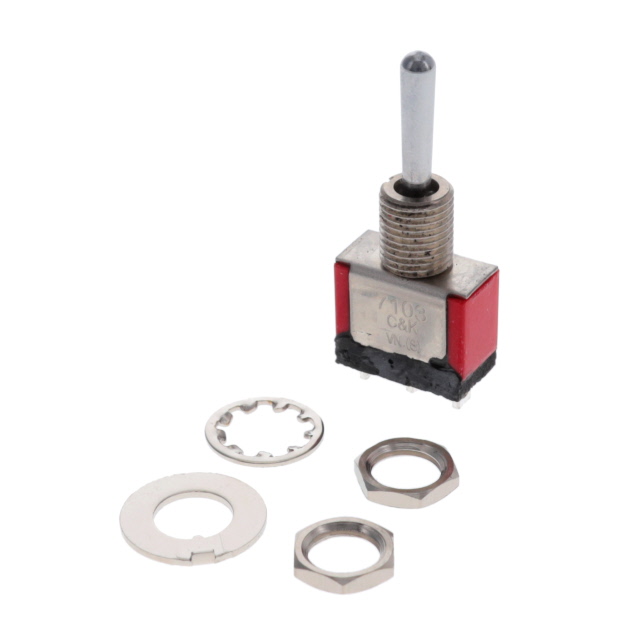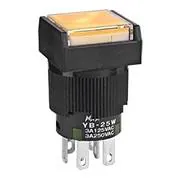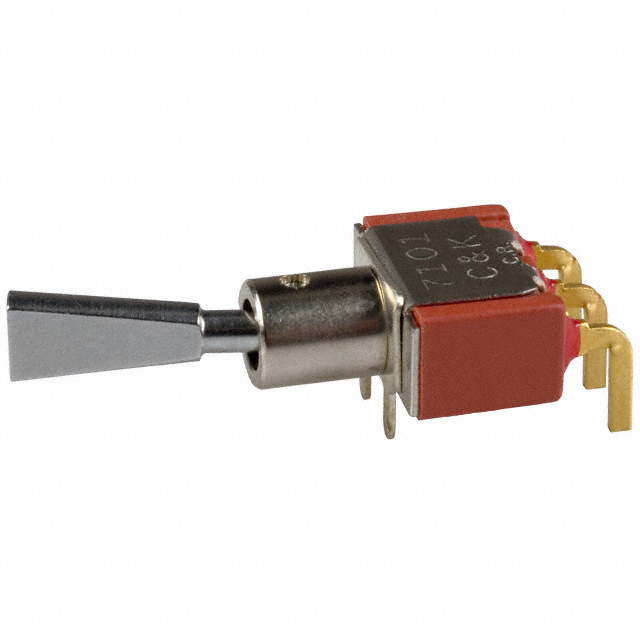
Body Temperature Measurement: Small Signal, Big Truth
Global electronic component supplier ERSAELECTRONICS: Rich inventory for one-stop shopping. Inquire easily, and receive fast, customized solutions and quotes.
Overview
Ever stared at a bedside monitor and wondered, “How does this one number feel so decisive?” That’s Body Temperature Measurement: the tiny signal with outsized clinical gravity. It’s a handshake between physics (heat flow, radiation), electronics (microvolts, picoamps), and user reality (fussy toddlers, drafty rooms, busy wards). Good Body Temperature Measurement shows up fast, tells the truth, and stays calm when conditions aren’t.
The mission: convert raw heat cues into a confident estimate, with a readable “how sure are we?” The tools: contact probes (thermistors/RTDs/ICs) and non-contact IR (thermopiles/arrays), a low-noise AFE/ADC, smart convergence logic, and human-friendly UI. When Body Temperature Measurement is designed like a system—not a part—products assemble quicker, pass validation earlier, and age gracefully in the field.
.png?x-oss-process=image/auto-orient,1/quality,q_70/format,webp)
Architecture
Picture Body Temperature Measurement as a three-act play: the **sensing act** (touch or look), the **readout act** (shrink tiny signals into clean codes), and the **meaning act** (map those codes to a trustworthy degree symbol and a confidence nudge). If any act flubs its line, the number wobbles—or lies.
- Contact chain: tip → thermal mass → sensor → bias → ADC. Fast heat flow + minimal self-heating = crisp Body Temperature Measurement without long waits.
- IR chain: optics → thermopile/array → ultra-low-noise TIA → ADC → emissivity & ambient compensation. Clean view geometry = honest radiation = honest Body Temperature Measurement.
- Controller & UI: schedule sampling, judge convergence, show confidence, coach placement. Make Body Temperature Measurement obvious even in bad lighting and noisy rooms.
House rules: respect timing (avoid PWM/display/RF noise), shield the sensitive node from drafts and reflections, and keep calibration constants under version control. That’s how Body Temperature Measurement stays repeatable on real Tuesdays.
.png?x-oss-process=image/auto-orient,1/quality,q_70/format,webp)
Sensors & Interfaces
Sensors are the diplomats of Body Temperature Measurement—the job is to translate reality into electrons without drama. Choose based on interface physics, not brochure charisma.
- Thermistor (NTC): Sensitive near 37 °C, cheap, non-linear. With a steady bias and Steinhart–Hart, thermistors deliver quick, credible Body Temperature Measurement—if the tip makes solid thermal contact.
- RTD (Pt100/1000): Linear, stable, noble. Four-wire bridge + IA = sub-0.05 °C steps; mind self-heating. When Body Temperature Measurement must hold calibration for years, RTD is the adult in the room.
- Temp IC: Digital convenience. Great for ambient/board tracking around the measurement path; good glue for the full Body Temperature Measurement picture.
- Thermopile (IR): Microvolts of radiance; optics and emissivity decide if those microvolts tell the truth. The prize is touch-free Body Temperature Measurement that people actually tolerate.
- Microbolometer/array: More pixels, fewer excuses. Spatial context keeps off-axis backgrounds from hijacking your Body Temperature Measurement—at a power/cost premium.
Mechanics win or lose the day: tip geometry, coatings, pressure and time constants (contact) or apertures, IR windows, and baffles (IR). If the interface is sloppy, Body Temperature Measurement becomes a weather report.
.png?x-oss-process=image/auto-orient,1/quality,q_70/format,webp)
AFE & Data Acquisition
The AFE is where Body Temperature Measurement becomes numbers you can argue about. Bias precisely, reject noise, and digitize with enough honesty to make the math look easy.
- Bias & linearize: Dividers or constant-current for NTC/RTD; document coefficients. Self-heating lies—duty-cycle bias if needed so your Body Temperature Measurement doesn’t drift upward while nobody’s watching.
- Amplify & filter: IA/TIA with input-referred noise below your °C target. Gentle anti-aliasing matched to cadence. In IR Body Temperature Measurement, long integration windows tame microvolts without smearing events.
- Digitize & timestamp: 16–24-bit ΔΣ at a cadence tied to the thermal time constant. Honest time tags make Body Temperature Measurement convergence logic sane.
- Prove it: Mux paths and pads for factory points. Production seeks repeatable Body Temperature Measurement, not lab magic.
.png?x-oss-process=image/auto-orient,1/quality,q_70/format,webp)
Algorithms & Clinical Modes
Algorithms are the negotiators in Body Temperature Measurement: “Here’s what the sensor says, here’s what physiology expects, here’s how sure we are.” They predict the destination from the early part of the trip, then know when to stop the car.
- Convergence: Track slope, fit a short-term model, and gate on confidence. If the trace hiccups (motion/drafts), pause. Honest Body Temperature Measurement sometimes says, “Hold up.”
- Filtering: Low-pass with outlier teeth. Over-smooth and your Body Temperature Measurement looks serene but late.
- IR compensation: Emissivity LUTs, ambient and housing sensors, off-axis detection. Without this, non-contact Body Temperature Measurement is a mood ring.
- Wearables: Fusion (skin + ambient + motion + perfusion). Delay updates during activity spikes; resume when reality calms down. That’s adult Body Temperature Measurement.
- Explainability: Confidence bars and retry tips beat mystery digits. Clarity lowers support calls.
.png?x-oss-process=image/auto-orient,1/quality,q_70/format,webp)
Power, Safety & EMC
If power is messy, Body Temperature Measurement becomes gossip. Keep analog rails quiet, sequence like you mean it, and give motors/backlights a sandbox far from the sensor node.
- Domains: LDO for analog precision, bucks for digital/radios. Star grounds and short returns keep Body Temperature Measurement out of the hum.
- Warm-up: Micro-heaters speed contact probes—duty-cycle and shield so they don’t heckle your AFE.
- EMC: Guard rings, short sensor leads, courteous routing. Good EMC is invisible Body Temperature Measurement.
- Safety: Respect applied-part classes, leakage limits, safe states. When uncertain, stop and say so.
- Battery: Sample-gate-sleep rhythms keep wearables delivering continuous Body Temperature Measurement without charger anxiety.
.png?x-oss-process=image/auto-orient,1/quality,q_70/format,webp)
Compliance & Validation
Validation is where Body Temperature Measurement proves it’s science, not theatre. Start with black-body and bath references, add climate swings and supply variation, then show your math in clinical workflows for each site. Keep software lifecycle, usability, and risk thinking boringly traceable. Future you—and regulators—will thank you.
- Bench: black-body, stirred baths, chambers—hit min/max and dwell long enough to matter.
- Clinical: site-specific protocols; document offsets and time constants. Publish what the device will actually do.
- Process: electrical safety, EMC, software lifecycle, usability, risk management. If it isn’t logged, it didn’t happen.
.png?x-oss-process=image/auto-orient,1/quality,q_70/format,webp)
Sample BOM
This is the “don’t overthink it, but don’t under-spec it” list for dependable Body Temperature Measurement.
- Sensors: NTC/RTD for contact; thermopile (or array) for IR. Pick stability and drift that match your promised accuracy.
- AFE/ADC: Chopper IA or low-noise TIA, trustworthy reference, ΔΣ ADC (16–24-bit). Mux hooks for calibration.
- MCU: Low-power with timers/DMA; optional BLE for logs/updates. Store per-mode Body Temperature Measurement params with version tags.
- Power: Analog LDO, digital buck, heater control, charger + fuel gauge. Place sense parts where physics agrees.
- Mechanics: Conductive tip & mass (contact); baffled optics & AR window (IR). This is where speed feels like magic.
- Passives/EMC: 0.1–0.5% resistors, C0G/NP0 caps, ESD at the tip. Cheap parts, expensive peace.
- UI/UX: Big digits, progress hint, confidence bar, and “how to retry” that even Tuesday can understand.
.png?x-oss-process=image/auto-orient,1/quality,q_70/format,webp)
Disclaimer: This page covers electronics design for Body Temperature Measurement and does not provide medical advice or clinical claims.
Related Articles
- ·ICD Electronics: Tiny Lightning, Relentless Reliability
- ·Smart Pill Dispensing Electronics: From Missed Doses to Mission Control
- ·Electrosurgery Electronics: Turning RF Into a Surgical Superpower
- ·Endoscopic Imaging Electronics: Tiny Optics, Big Picture
- ·X-ray & CT Electronics: From Kilovolts to Reconstruction
- ·MRI Core Electronics: From Quench to K-Space
- ·IVD Electronics: Tiny Signals, Big Answers
- ·Vital Signs Monitor Electronics: Tiny Signals, Big Decisions
- ·Neurostimulator Electronics: Tiny Pulses, Big Nerves
- ·Pacemaker Electronics: Tiny Joules, Big Heart
















.png?x-oss-process=image/format,webp/resize,h_32)










